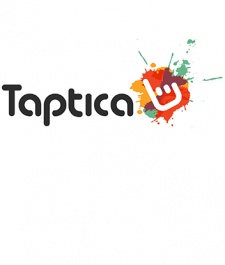Matt Tubergen is VP and GM of Taptica, a performance-based mobile advertising network. Matt has over 10 years experience in the mobile app and content industry, bringing large brands and gaming properties to market.
Matt's previous positions includes senior management roles at THQ and W3i along with supporting multiple successful start ups as founder and co-founder.
Following up on our previous post about planning for a post install analytics solution, here I would like to get into available analytics tools and how they are structured.
Almost all mobile app post install analytics tools such as Flurry, Mixpanel and others have similar components for how they structure their analytics.
Understanding these components will help you plan for and identify optimal ways to implement an analytics solution. Let's dive right in!
Events
Events are unique points of action that are captured and stored for later review. In mobile, events are typically tied to specific users. An event can simply be a user clicking on a button or a user completing a level in a game.
Events are used to help capture usage behavior, which can later be analysed against other events or cohorts of your users. Keep in mind that events can be just about anything that represents action. You can also compile a series of events to trigger a broader event.
Identifying these key events before doing integration will help reduce confusion when reports start flying in.
Event parameters
Parameters are relative data points that can be assigned to an event.
Take, for example, a user completing a level as an event. Once the event is triggered, a user might have a score and a star rating. Both the score and star rating could be assigned parameters to the event so that you could see on average how many users completed the level with a specific score and/or star rating.
Instrumenting your application to capture parameters at specific events will help you better understand why and how users are triggering certain events.
Segments and cohorts
Segments and Cohorts are groups of event data based on commonalities such as the date the user was acquired or the total length of time that a user uses the application.
Typically, segments are grouped on overall usage periods that help structure the information in a digestible period to be analysed against other periods.
Take, for example, an application publisher that does an update to their application. It's possible that the publisher would like to know if the new version is easier or harder on the first level then the previous version.
The publisher could compare the segments (based on version) to the number of users who complete each level and the relative star rating when finished.
Back to planning
In our previous post we talked about the importance of asking simple questions of the data. Once you have your questions established its time to identify the events, event parameters and the segments/cohorts that are meaningful to help answer those questions.
Grab a paper and pencil (or Evernote) and start identifying which events could be tied and might assist you in answering your questions.
Next time
In the next post we will review some recommended questions to ask of your app data and the best events, event parameters and segments to set up to help you answer these questions. See you next week!
To find out more about Taptica and the services it offers, take a look at the company's website.
A soup to nuts guide to mobile app analytics, by Taptica
#2 The fundamentals of post-install analytics





















